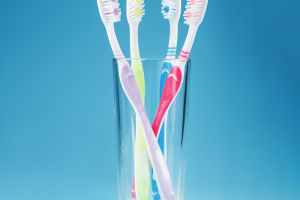The toothbrush is an indispensable hygiene tool in our daily lives, essential for maintaining oral health.
The material of its bristles directly influences its effectiveness and the overall health of your mouth.
This article will explore the common materials used for toothbrush bristles, the pros and cons of each material, and what to consider when purchasing a toothbrush.
1. Common Materials for Toothbrush Bristles
Toothbrush bristles are primarily divided into two categories: natural bristles and synthetic bristles. Natural bristles typically come from animal hair, while synthetic bristles are usually made from materials like nylon.
a. Natural Bristles
Natural bristles were once the most common material used for toothbrushes due to their softness and high absorbency. However, the advent of synthetic materials has gradually led to their decline.
Natural bristles are usually softer and less irritating, making them suitable for people with sensitive gums. Natural materials are more environmentally friendly and biodegradable compared to synthetic options.
However, natural bristles can easily harbor bacteria and are challenging to keep clean. They have a shorter lifespan and are prone to fraying or breaking over time.
b. Synthetic Bristles
Today, the majority of toothbrushes on the market feature synthetic bristles, with nylon being the most prevalent.
Synthetic bristles are less likely to harbor bacteria and are easier to clean. Synthetic materials have high wear resistance and elasticity, resulting in a longer service life. The hardness and softness of synthetic bristles can be adjusted to meet the needs of different users.
However synthetic materials are not biodegradable and pose environmental concerns.
2. Common Synthetic Bristle Materials
a. Nylon
Nylon is the most common material for toothbrush bristles, primarily available in two types: nylon 6 and nylon 6.12.
Nylon 6 is Known for its good hardness and elasticity, but it has high water absorption and tends to harden over time. Nylon 6.12 Offers lower water absorption and a longer lifespan compared to nylon 6, though it comes at a higher cost.
b. Polyester
Polyester bristles are softer than nylon bristles, have low water absorption, and are not easily deformed. They are suitable for individuals with sensitive gums but are less common due to their higher cost.
c. Polypropylene
Polypropylene bristles are relatively hard and are suitable for users requiring strong cleaning power. However, they can be more irritating to the gums and are not ideal for people with sensitive gums.
3. Factors to Consider When Buying a Toothbrush
Choosing the right toothbrush bristle material is crucial for maintaining oral health. Here are some key factors to consider when purchasing a toothbrush:
a. Hardness of Toothbrush Bristles
Toothbrush bristles with moderate hardness can effectively clean teeth without causing excessive irritation to the gums. Generally, adults can opt for medium hardness bristles, while children and those with sensitive gums should choose softer bristles.
b. Density of Toothbrush Bristles
Toothbrush bristles with higher density can better clean the tooth surface and interdental spaces. However, too high a density can reduce the flexibility of the bristles and diminish the cleaning effect. It is best to choose bristles with moderate density.
c. End Treatment of Toothbrush Bristles
The ends of high-quality toothbrush bristles are rounded to minimize gum damage. When purchasing, check the product description or consult a salesperson to ensure the bristles have been properly treated.
d. Size of the Brush Head
The size of the brush head should be appropriate for the size of your mouth. Adults typically choose a medium-sized brush head, while children should use a small brush head for more flexible operation.
Conclusion
The material of toothbrush bristles significantly impacts their effectiveness and your oral health. When selecting a toothbrush, consumers should consider the hardness, density, end treatment of the bristles, and the size of the brush head to ensure effective cleaning and protection of their oral health.
By making informed choices and using toothbrushes correctly, you can maintain better oral hygiene and prevent various oral diseases.


